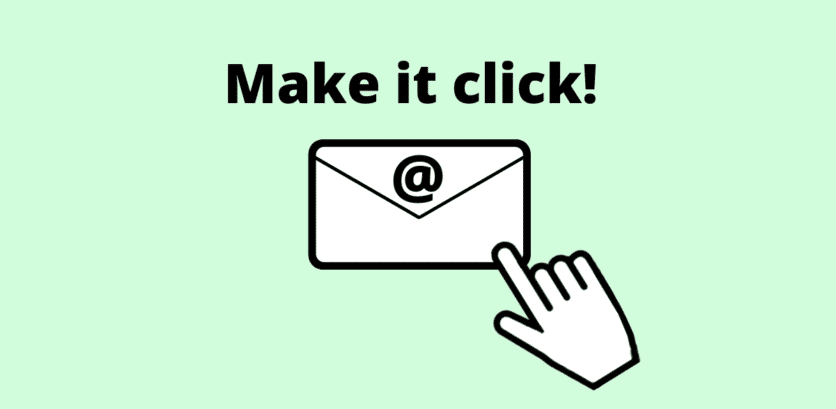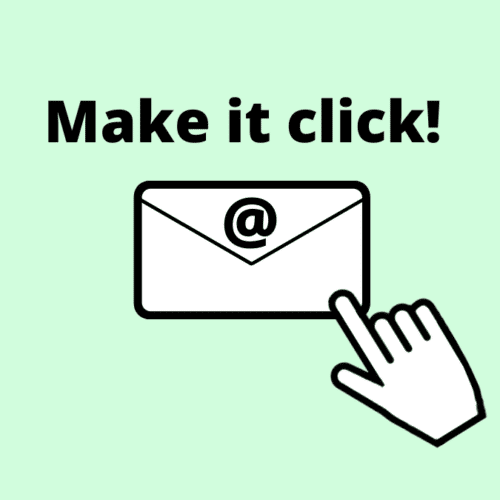Email marketing is a low-cost, time-saving channel that sends promotional content direct to your customers’ inboxes. All types of businesses, from hotels to bookstores and everything in between, have discovered the power of targeted email marketing campaigns to win over new customers or cement older connections.
Angela is a Dublin-based freelance copywriter and sub-editor.
In a competitive market, how do you grab a customer’s attention and stop them moving your marketing email to their ‘Spam’ ? It’s all about the language you use. Here are 5 ways to use words in a way that will effectively connect you with your customers and encourage them to choose your business or product again and again.
1. Hook them with the subject line …
Email recipients delete as much as 65% of messages based on the subject line. Pick up any newspaper and you’ll know how important a snappy, eye-catching heading is when it comes to catching a reader’s attention. Your email’s subject line should do the same job.
Remember that most of your customers will read their emails on a mobile device. Keep the email subject line short, 30-50 characters – any longer than this and too many words will be cut off. Use words that create a sense of urgency to spur the reader into action: i.e. ‘Book now for 30 per cent off all rooms’, ‘Order the latest fiction releases today’ or ‘Don’t miss out – buy your summer wardrobe now’. If the reader is afraid of missing out on something special, they are more likely to part with their cash.
And don’t forget the preview text - the small line of text that appears after the subject line in an email inbox. For example, a seaside hotel’s preview text might read: ‘Enjoy sea views and luxurious rooms at our hotel’.
2. Use active language and appeal to emotions
The active voice is more engaging than the passive and can add sparkle to your writing. The sentence ‘Find the latest fiction novels at our store’ is more engaging than ‘The latest fiction novels are found at our store’. ‘Slip your feet into a new pair of heels’ is more enticing than ‘A new pair of heels can be slipped onto your feet’.
You’ll want the readers to picture themselves using your product or booking your service, so think carefully about how you describe your business. A seafood restaurant email that reads ‘Tuck into locally sourced fresh seafood prepared by our award-winning chef, as you admire the views’, creates a more vivid picture than ‘Fresh seafood that our chef has prepared can be ordered’.
3. Keep it personal
As you write the marketing email, pretend you are talking enthusiastically to a friend about your business instead of writing for hundreds of potential customers. What kind of language would you use with a friend? Use the pronouns ‘we’, and ‘you’, to make it more intimate. ‘We know you want great style you can afford – so check out our stunning summer fashions’.
Talk about the benefits of your product, and how it can add value to the customer’s life, rather than describing the features in an abstract manner.
For example, a jeans store marketing email would read: “Our hard wearing, comfortable jeans will last season after season” (a benefit), instead of “We use high quality cotton in the seams” (a feature).
4. Presentation is key
Readers don’t have the time to read lengthy marketing emails. They’ll most likely be reading on the move, so get to the point quickly. Make your text scannable by breaking copy into small chunks with one key idea per paragraph – don’t be afraid to use bullet points.
Keep your email sentences short, snappy and conversational. Essay-type emails will have readers hitting the ‘delete’ button.
And don’t ‘shout’ at the reader by using words written entirely in capital letters or ending sentences with exclamation marks.
5. Include a simple Call to Action
Too many clickable options in your email can be confusing and overwhelming for readers. Finish the email with one Call to Action button that clearly states what you want your readers to do. Write the CTA in the imperative.
Simple phrases like ‘Book now’, ‘Call us today’, or ‘Buy summer style now’, linking to the conversion page on your website, are all you need to complete your email and, hopefully, entice happy customers to act.

